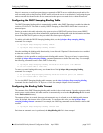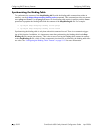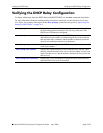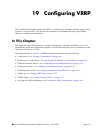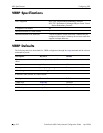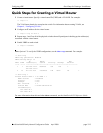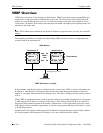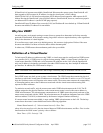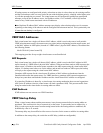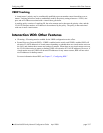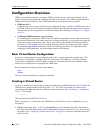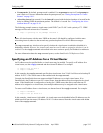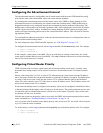
VRRP Overview Configuring VRRP
page 19-4 OmniSwitch 6600 Family Network Configuration Guide April 2006
VRRP Overview
VRRP allows routers on a LAN to back up a default route. VRRP dynamically assigns responsibility for a
virtual router to a physical router (VRRP router) on the LAN. The virtual router is associated with an IP
address (or set of IP addresses) on the LAN. A virtual router master is elected to forward packets for the
virtual router’s IP address. If the master router becomes unavailable, the highest priority backup router will
transition to the master state.
Note. The IP address that is backed up may be the IP address of a physical router, or it may be a virtual IP
address.
The example provided here is intended for understanding VRRP and does not show a configuration that
would be used in an actual network.
In this example, each physical router is configured with a virtual router, VRID 1, which is associated with
IP address A. OmniSwitch A is the master router because it contains the physical interface to which IP
address A is assigned. OmniSwitch B is the backup router. The client is configured with a gateway address
of IP A.
When VRRP is configured on these switches, and both switches are available, OmniSwitch A will respond
to ARP requests for IP address A using the virtual router’s MAC address (00:00:5E:00:01:01) instead of
the physical MAC address assigned to the interface. OmniSwitch A will accept packets sent to the virtual
MAC address and forward them as appropriate; it will also accept packets addressed to IP address A (such
as ICMP ping requests).
OmniSwitch B will respond to ARP requests for IP address B using the interface’s physical MAC address.
It will not respond to ARP requests for IP address A or to the virtual router MAC address.
OmniSwitch B
OmniSwitch A
VRID 1
IP A
IP B
VRRP Redundancy Example
Virtual Router
VRRP Routers
Master 1
Backup 1
IP A
default gateway to IP A
client station




